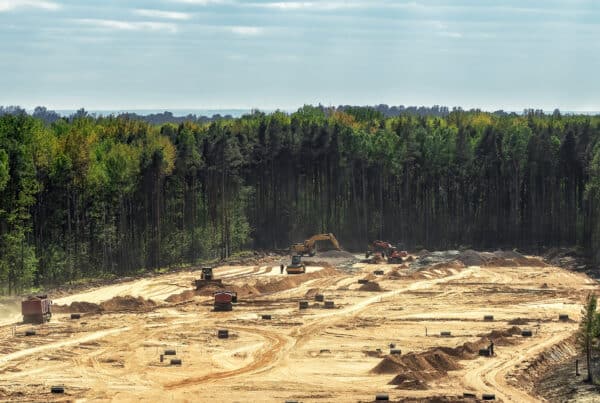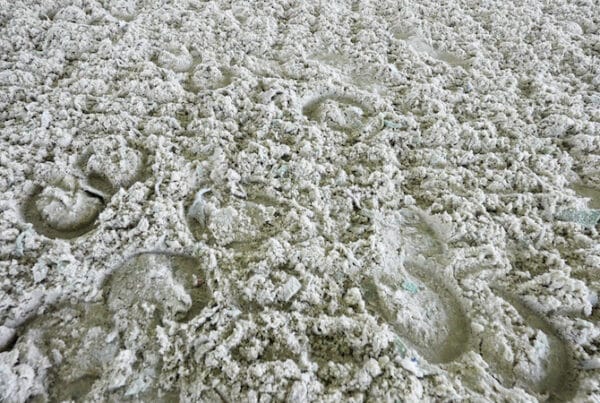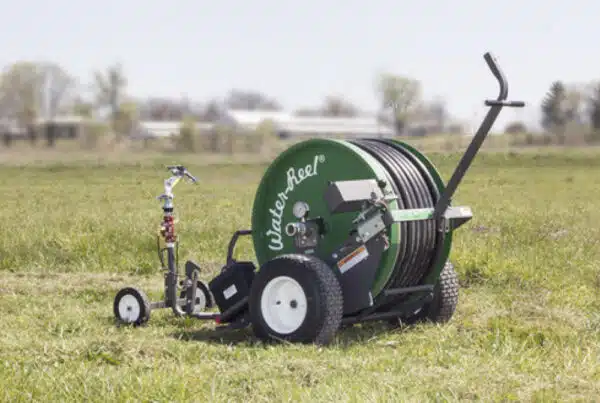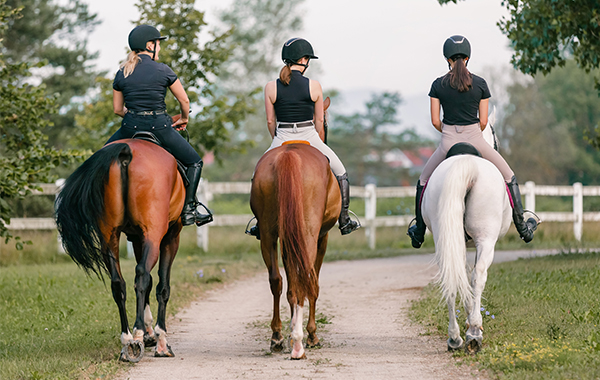No equestrian facility is immune to the negative effects of excessive moisture combined with poor drainage. Without proper planning, mud and soggy ground can become a fact of life in wash areas, dry lot turnouts, and around high-use areas like paths and gates. It can even erode driveways and parking lots. Not only is this damage unsightly, but it can also cause management headaches ranging from lost shoes to skin irritation and more. If these challenges sound familiar, read on—we have a solution for you!
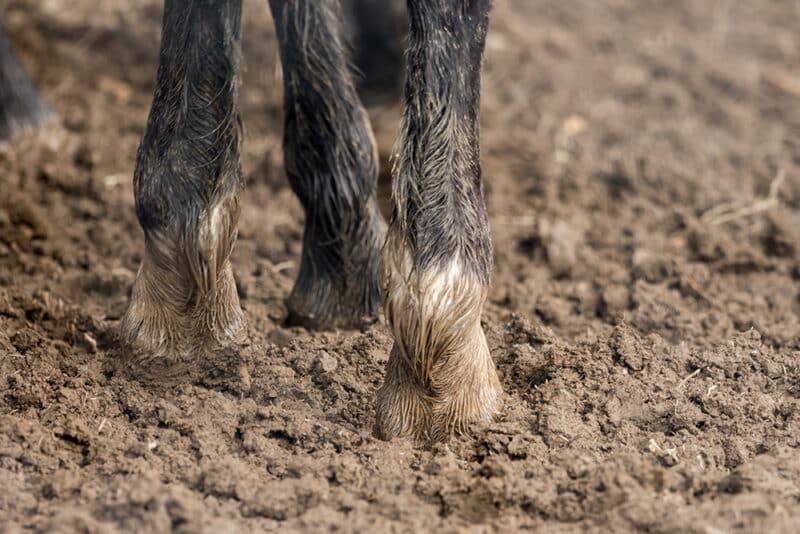
Resolving these problems requires making it easier for water to move through to the substrate, while still providing stability and grip to minimize erosion and prevent further damage. Here at Premier Equestrian, we regularly advise clients how best to achieve these goals without breaking their budget. We recommend our economically priced Premier Geo Grid Mats as part of the solution.
“Geo Grid Mats help drain surfaces while providing stability,” says Heidi Zorn, president of Premier Equestrian. “In paddocks, Geo Grid helps prevent digging horses from causing damage, and on a gravel driveway or parking lot, Geo Grid prevents ruts and potholes.”
But sand surfaces like paddocks, driveways, and parking lots aren’t the only places where Geo Grid Mats can help—they also improve poorly drained grass pastures.
“We’ve had people install Geo Grid Mats across their entire pasture, while others just do high-use areas like gates and water troughs,” says Zorn. “In places like Florida, where the soil is sandy, it can be hard to get good grass growing. With Geo Grid Mats, horses have a hard time digging the surface up, allowing grass to properly take root.”

Geo Grid Mats are made from a reinforced, high-density polyethylene; they are rugged, and can handle up to 25 tons per square foot when properly installed. And with interlocking tabs to snap the pieces together, installation is so easy you can do it yourself with a regular tractor—although for larger spaces, hiring a contractor may still be preferred.
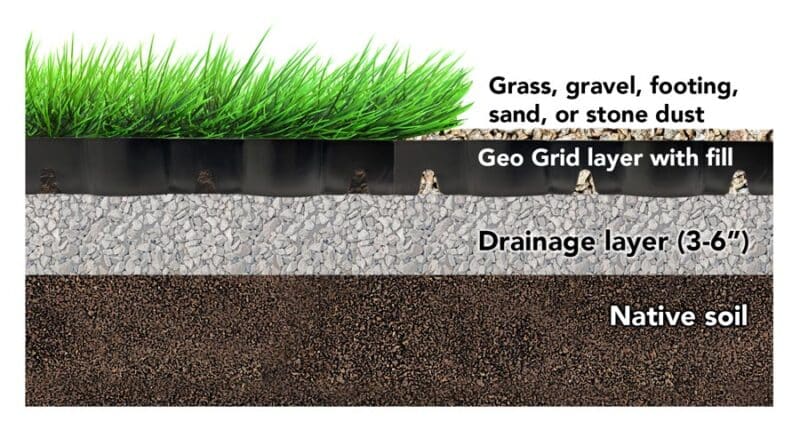
The first installation step is to scrape the surface clear. Next, install a drainage layer, usually built of clean rock. A drain pipe can be used to expedite moving water away from the paddock area. Lay the Geo Grid Mats down to cover this surface, fill the open area with clean gravel 3/4″ or less, and finish by topping it all off with the appropriate sand (or sod, in the case of a grass pasture). Zorn cautions that not all sands are created equal, and choosing the right sand for the job is critical to success.
“For paddock sand—whether it is a 12-foot by 12-foot paddock or stall, or a larger corral with a lean-to, any place where horses live—we try to use a bigger sand particle,” says Zorn. “Finer sand particles stick to food and are too easily ingested, putting the horse at risk for sand colic.”
Additionally, for barefoot horses it is important that the sand is not too angular, which can lead to excessive hoof wear and even sensitivity.
“In that case, you want to use a rounder particle like river sand—something with a smooth edge to it,” says Zorn. “But still a larger particle than in traditional sand.”
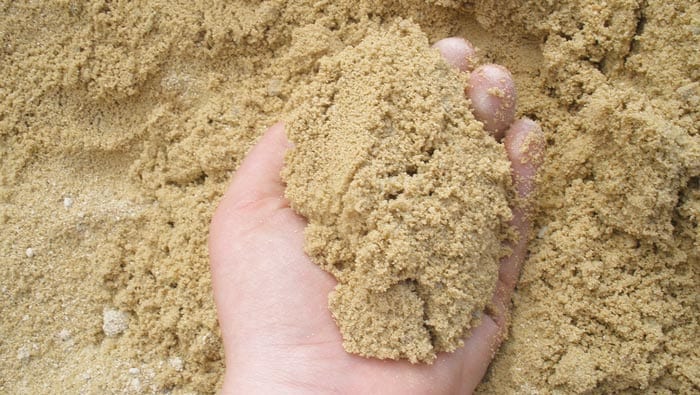
If choosing the correct sand is overwhelming, Premier Equestrian is here to help. We maintain an extensive sand library, and our experts are trained to assist clients in selecting the best sand for their situation. With a network of over 200 sand pits across the country, Premier Equestrian helps connect clients with a source of sand appropriate for their project. Contact us for a free sand analysis to learn more.
If you are tired of muddy paddocks, soggy pastures, or rutted driveways, it’s time to contact the experts at Premier Equestrian. With a solution for every budget, we are here to help! Call 800-611-6109 to speak with our experts or schedule a free consultation.
SHOP THE BLOG
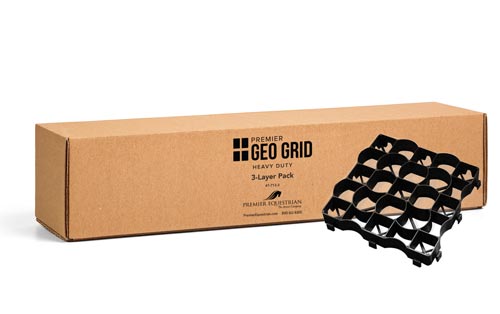
Premier Geo Grid Mats – Box of 27 grids $159.00
Each box covers 32.20 sq ft
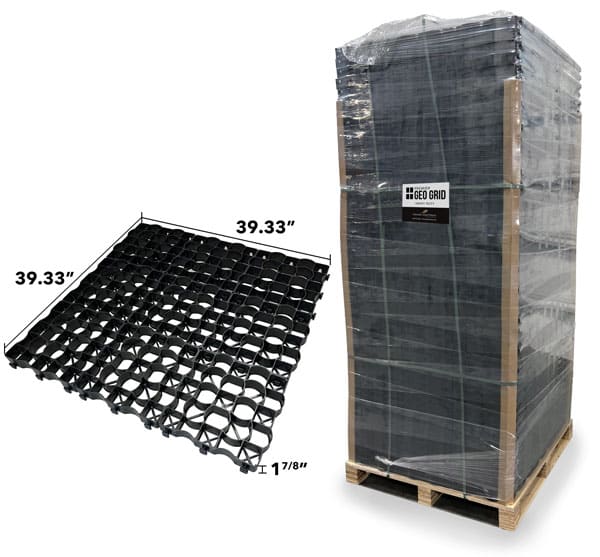
Premier Geo Grid Mats –
Sold by pallet for larger areas

